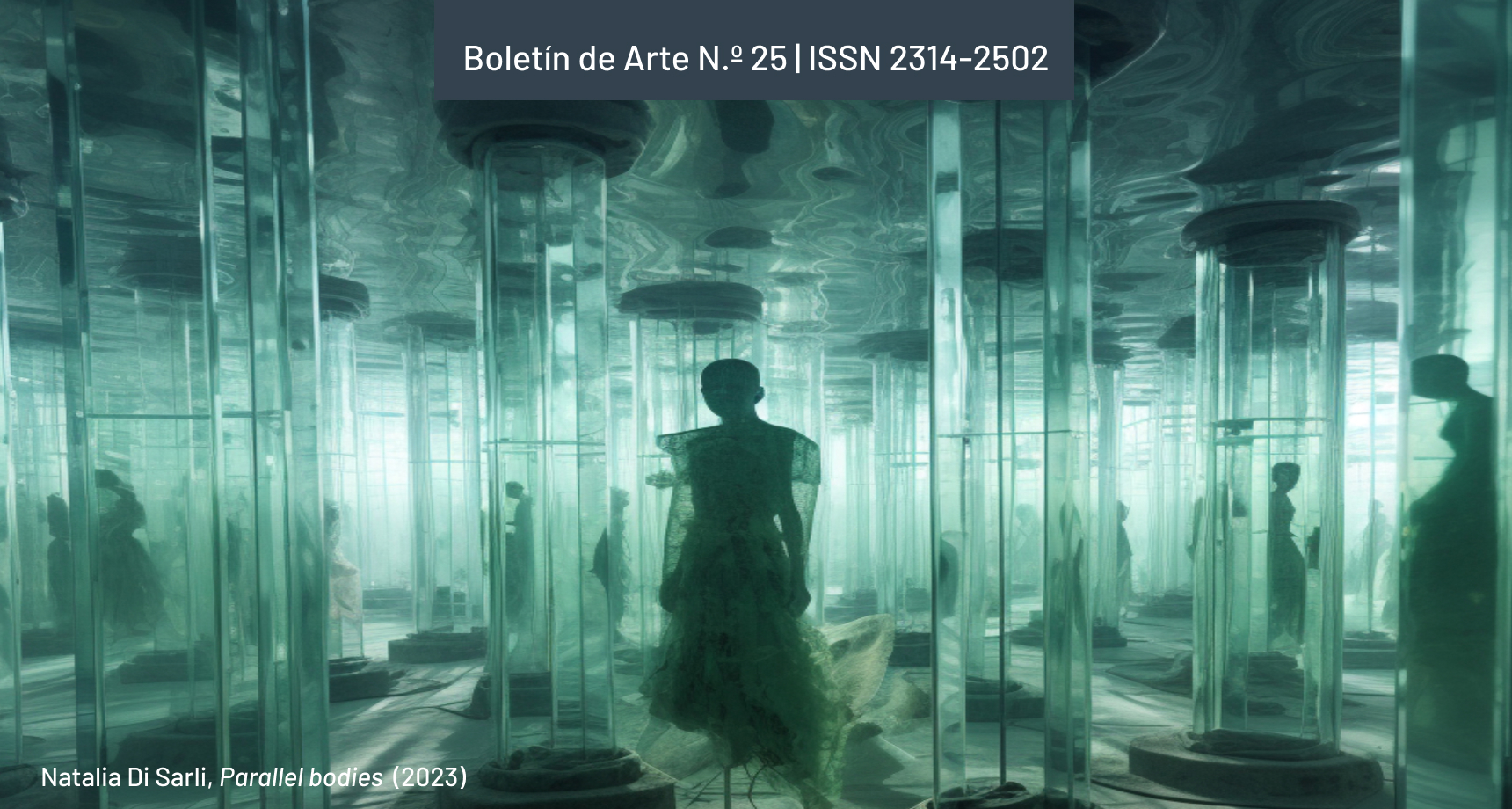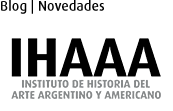Art, Aristocracy and Women’s Press
The Case of Familia (1910-1928) in Chile
DOI:
https://doi.org/10.24215/23142502e058Keywords:
Women’s press, Women artists, Art history, ChileAbstract
During the first third of the 20th century in Chile, the appearance of multiple feminist currents was accompanied by an explosive growth in women’s press. Linked to the aristocratic feminism of the time, the magazine Familia (1910-1928) moved constantly between abnegation and emancipation, taking place within its numbers new ways of being an aristocratic woman. This article aims to review how these new ways of being permeated the woman artist model contained in Familia.Downloads
References
Constancia. (1918). Feminismo. Familia, (108), 6.
Cortés, G. (2013). Modernas. Historias de mujeres en el arte chileno (1900-1950). Origo.
Cortés, G. (2021). «Yo desprecio a los ricos, nunca han pensado en mí». La cuestión de clase al interior de las relaciones femeninas en el arte chileno. En El canon accidental: Mujeres artistas en Argentina (1890-1950) (pp. 40-45). Museo Nacional de Bellas Artes.
de la Cruz, I. (1923). Raquel González Acevedo. Familia, (168), 7, 44-45.
Díaz Garcés, J. (1917). Señoras. Pacífico Magazine, (49), 3-8.
Díaz Navarrete, W. (Ed.). (2010). Bohemios en París. Espistolario de artistas chilenos en Europa 1900-1940. RIL Editores.
Feliú Cruz, G. (1969). Emilio Vaïsse (Omer Emeth) (1860-1935). Humanista, crítico literario y bibliógrafo. La bibliografía general de Chile, ensayo. Bibliógrafos chilenos.
Formas, E. (1917). Desarrollo del arte pictórico. Familia, (90), 3.
Gloria. (1911). Desarrollad en vuestras hijas la virtud de la abnegación. Familia, (19), 2.
Huneeus G., J. (1923). Dora Puelma de Fuenzalida. La paisajista del gris. Familia, (165), 7, 44-45.
Kismet. (1915). Los cuadros de María Ibáñez. Familia, (70), 7-8.
Klimpel, F. (1962). La mujer chilena: (El aporte femenino al progreso de Chile) 1910-1960. Editorial Andrés Bello.
Kottow, A. (2013). Feminismo y femineidad: escritura y género en las primeras escritoras feministas en Chile. Atenea, (58), 151-169.
Matte, R. (1914). La guerra [Escultura]. Palacio de la Paz de La Haya, Holanda.
Montero, C. (2018). Y también hicieron periódicos. Cien años de prensa de mujeres en Chile 1850-1950. Hueders.
Museo Nacional de Bellas Artes. (2017). Desacatos, prácticas artísticas femeninas 1835- 1938. Museo Nacional de Bellas Artes.
Onix, (1911). El matrimonio, su éxito o fracaso. Familia, (22), 4.
Parker, R., y Pollock, G. (2013). Old Mistresses. Women, Art and Ideology [Maestras antiguas. Mujeres, arte e ideología]. I.B. Tauris.
Reyes, R. (1915). La Guerra. Familia, (62), 3-4.
Rivera Aravena, C. (2005). El discurso de la domesticidad. Apropiación cultural desde lo femenino. En R. Aedo, M. Berríos, J. Osorio y O. Ruiz (Eds.), Espacios de Transculturación en América Latina (pp. 33-50). Centro de Estudios Culturales Latinoamericanos. https://cecla. uchile.cl/wp-content/uploads/2012/12/Espacios-de-transculturaci%C3%B3n-en-Am%-C3%A9rica-Latina.pdf
Schor, M. ([1991] 2007). Linaje paterno. En K. Cordero Reiman e I. Sáenz (Comps.), Critica feminista en la teoría e historia del arte (pp. 111-130). Biblioteca Francisco Xavier Clavijero, Universidad Iberoamericana de México. https://sentipensaresfem.files.wordpress.com/2016/09/cordero_saenzcomps_critica_feminista_en_la_teoria_e_historia_del_ arte2001.pdf
SURDOC. https://www.surdoc.cl/
Varas, C. (1921). La Escuela de Bellas Artes. Pacífico Magazine, (101-102), 455-463.
Vergara Loyola, J. L. (2014). Cautivas y liberadas: Modelos de mujer en revistas femeninas de comienzos del siglo XX en Chile. La Silueta (1917/1918) y Acción Femenina (1922/1924). [Tesis de pregrado, Facultad de Artes de la Universidad de Chile]. https://repositorio.uchile.cl/bitstream/handle/2250/145197/cautivas-y-libradas.pdf?sequence=1&isAllowed=y
Downloads
Published
How to Cite
Issue
Section
License

This work is licensed under a Creative Commons Attribution-NonCommercial-ShareAlike 4.0 International License.
According to these terms, the material can be copied and redistributed by any means or in any format as long as a) the author and original source of the publication are quoted (magazine and URL of the work), access to the license is provided and whether changes have been made is mentioned; and b) the material is not used for commercial purposes.
The cession of non-exclusive rights means that after the publication (post print) in Boletín de Arte the authors can publish their work in any language, means and format; in such cases it must be mentioned that the material was originally published in this magazine.
Such cession also means the authorization of the authors for the work to be collected by SEDICI, the institutional archive of the National University of La Plata, and to be spread in the databases that the editorial team considers appropriate to increase the visibility of the publication and its authors.
Moreover, the magazine encourages the authors to deposit their productions in other institutional and thematic archives under the principle that offering the society the scientific and academic production without any restrictions contributes to a greater exchange of the global knowledge.
































